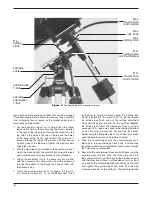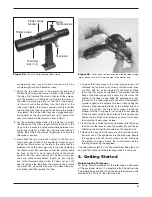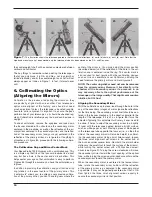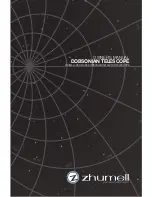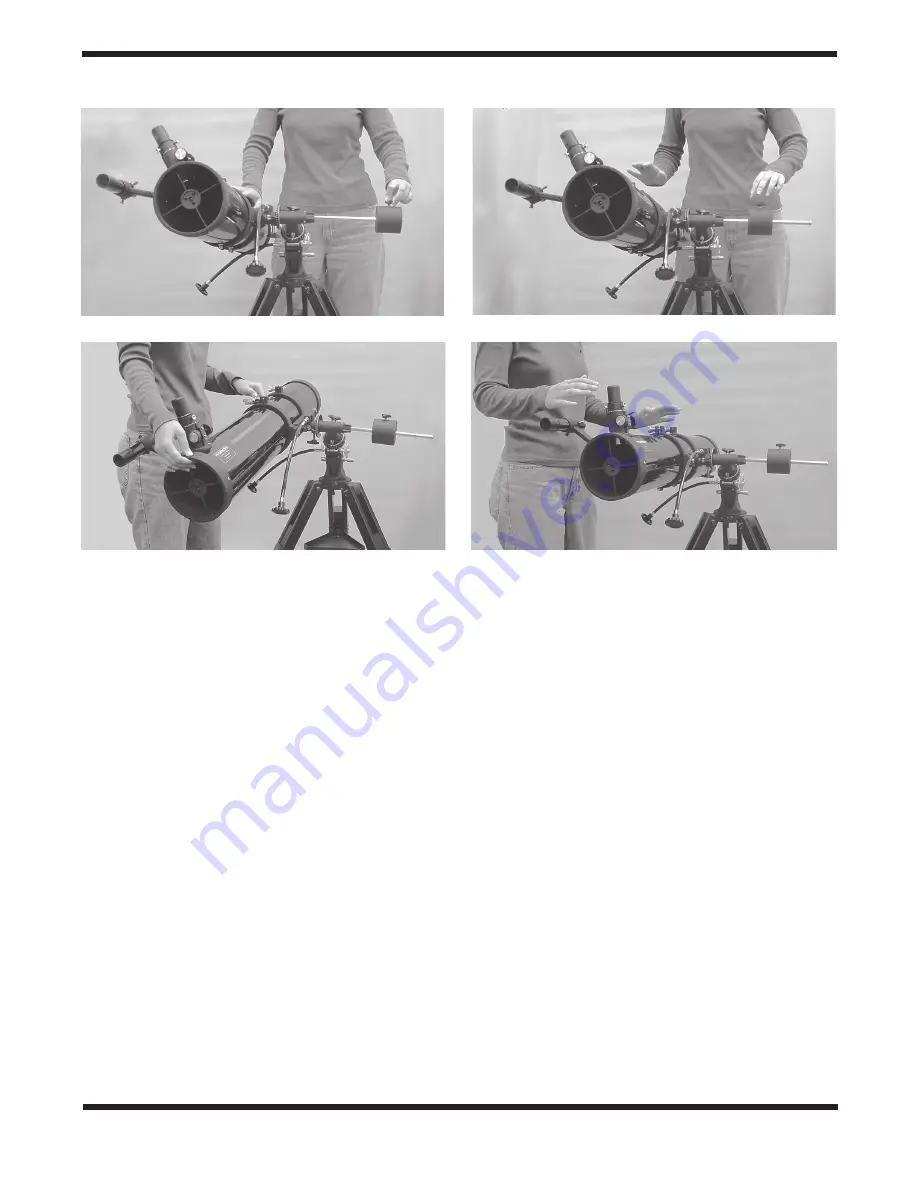
6
1. Keeping one hand on the telescope optical tube, loosen
the R.A. lock lever. Make sure the Dec. lock lever is
locked, for now. The telescope should now be able to
rotate freely about the R.A. axis. Rotate it until the coun-
terweight shaft is parallel to the ground (i.e., horizontal).
2. Now loosen the counterweight lock knob and slide the
weight along the shaft until it exactly counterbalances the
telescope (Figure 4a). That’s the point at which the shaft
remains horizontal even when you let go of the telescope
with both hands (Figure 4b).
3. Retighten the counterweight lock knob. The telescope is
now balanced on the R.A. axis.
4. To balance the telescope on the Dec. axis, first tighten
the R.A. lock knob, with the counterweight shaft still in the
horizontal position.
5. With one hand on the telescope optical tube, loosen the
Dec. lock knob. The telescope should now be able to
rotate freely about the Dec. axis. Loosen the tube ring
clamps a few turns, until you can slide the telescope tube
forward and back inside the rings (this can be aided by
using a slight twisting motion on the optical tube while
you push or pull on it) (Figure 4c).
6. Position the telescope so it remains horizontal when you
carefully let go with both hands. This is the balance point
(Figure 4d). Before clamping the rings tight again, rotate
the telescope so the eyepiece is at a convenient angle for
viewing. When you are actually observing with the tele-
scope, you can adjust the eyepiece position by loosening
the tube rings and rotating the optical tube.
7. Retighten the tube ring clamps.
The telescope is now balanced on both axes. Now when you
loosen the lock knob on one or both axes and manually point
the telescope, it should move without resistance and should
not drift from where you point it.
Focusing the telescope
Insert the low-power 25mm eyepiece into the focuser and
secure with the thumb screws. Move the telescope so the
front (open) end is pointing in the general direction of an
object at least 1/4-mile away. Now, with your fingers, slowly
rotate one of the focusing knobs until the object comes into
sharp focus. Go a little bit beyond sharp focus until the image
just starts to blur again, then reverse the rotation of the knob,
just to make sure you’ve hit the exact focus point.
If you have trouble focusing, rotate the focus knob so the
drawtube is in as far as it will go. Now look through the eye-
Figure 4a, 4b, 4c, 4d.
Proper operation of the equatorial mount requires that the telescope tube be balanced on both the R.A. and
Dec. axes. (a) With the R.A. lock knob released, slide the counterweight along the counterweight shaft until it just counterbalances the tube.
(b) When you let go with both hands, the tube should not drift up or down. (c) With the Dec. lock knob released, loosen the tube ring lock
clamps a few turns and slide the telescope forward or back in the tube rings. (d) When the tube is balanced about the Dec. axis, it will not
move when you let go.
b.
d.
c.
a.




